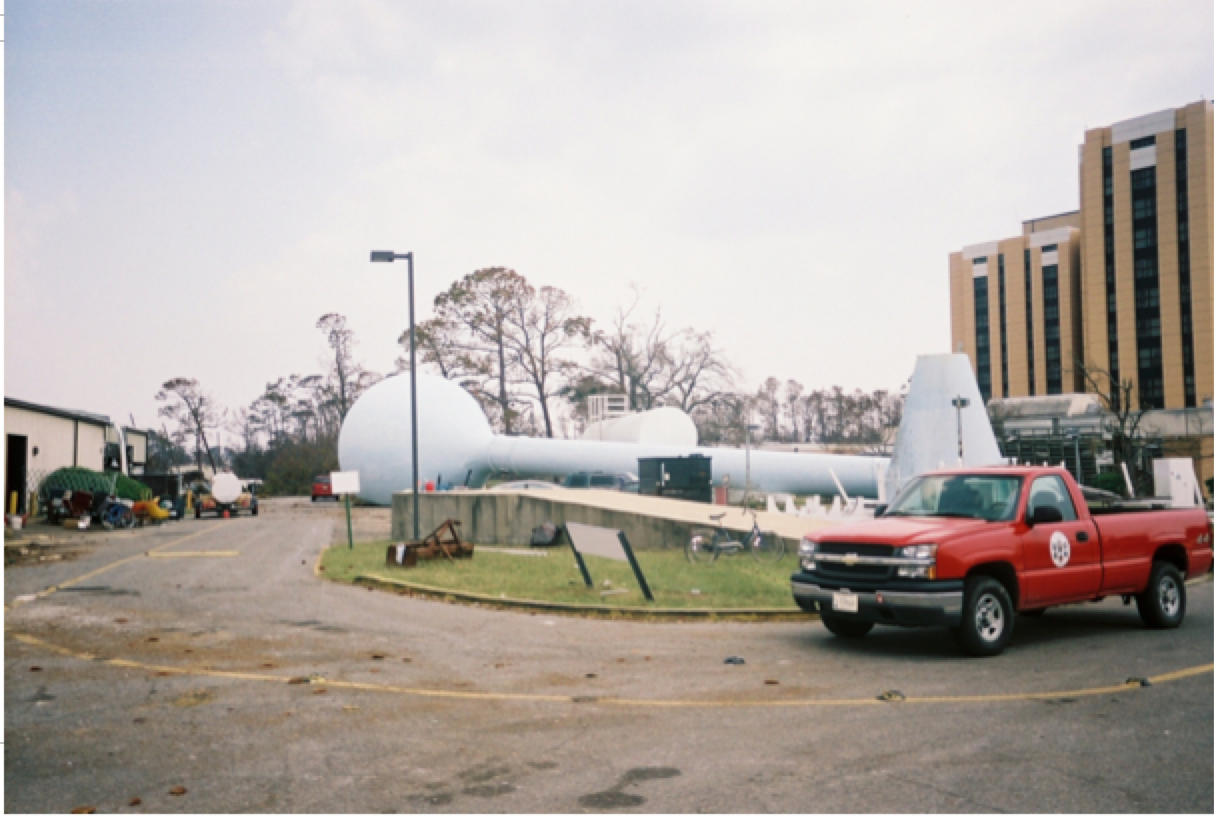
John Thorhauer and Lori Herbig have conducted new employee orientations at United Methodist Retirement Communities before. But today, the orientation proceeded a little differently from normal for the two leaders, president/CEO and senior vice president/chief executive officer of the Michigan organization, respectively.
This morning, an article about Thorhauer’s experiences in Mississippi during Hurricane Katrina, almost exactly 10 years ago, appeared in a local newspaper and on the MLive.com website, and a new staff member asked Thorhauer about it, revealing that she had lost her home in Texas during the same storm.
 “It was kind of an odd thing to hear today from a fairly new employee who was in orientation, that she lost her house but she was several states over,” Thorhauer tells McKnight’s Senior Living.
“It was kind of an odd thing to hear today from a fairly new employee who was in orientation, that she lost her house but she was several states over,” Thorhauer tells McKnight’s Senior Living.
Indeed, as the country marks the 10th anniversary of Hurricane Katrina, the storm continues to affect Thorhauer’s personal and professional life.
In August 2005, Thorhauer had moved with his family from western Michigan to Gulfport, MS, to become the first civilian director of the Armed Forces Retirement Home, a continuing care retirement community for retired war veterans. The Thorhauers — John, his wife, Laura, and their eighth-grade daughter, Kirsten — began settling in their new town. He underwent a week-long orientation at the CCRC and officially was the community’s director for one day before the hurricane hit.
Thorhauer still recalls how staff members relocated residents from the nursing home part of the CCRC to the attached 11-story building, then moved independent and assisted living residents as well as nursing home residents to the first-floor cafeteria, then the second floor, then the third floor, as water levels rose. Winds shattered dozens of windows throughout the building, exposing residents and staff to the weather.
Meteorologist Jim Cantore and a crew from the Weather Channel even interviewed Thorhauer and stayed at the retirement home while they broadcast hurricane-related news — until the power and phone service was lost. “They lost their weather truck as well as a rental vehicle that they had, in the storm,” Thorhauer says. “Then they became people who helped us.”
Fortunately, no Armed Forces Retirement Home residents or staff members died or suffered major injuries from Hurricane Katrina. The CCRC was irreparably damaged, however, and all of the home’s vehicles were lost to the storm. Thorhauer exchanged cigarettes that he had found for a truck so that he could check on residents who had been hospitalized.
Buses ultimately transported some residents, employees and their families to the nation’s capital, the location of the other Armed Forces Retirement Home. “They had a building that they were getting ready to take out of commission, and they were able to open that back up,” Thorhauer says. A concrete slab outside the CCRC served as his bed for a week as the evacuation occurred. Afterward, Thorhauer and most staff members were laid off.
The hurricane affected the Thorhauers’ personal lives, too. Their new house was destroyed, and they lost a vehicle. Thorhauer and his family left Mississippi with two suitcases and moved into a hotel for two weeks, and then an apartment, in Virginia, close to family.
That October, Thorhauer was offered the temporary position of vice president of administration, overseeing the areas of finance and human resources, at United Methodist Retirement Communities. Two months later, he became COO, and nine months after that, CEO. During his nine years as leader, the organization — which offers a continuum of home healthcare, independent living, assisted living, short-term medical and rehabilitative care, as well as memory loss/dementia care — has increased its number of locations from three to nine, and it now serves about double the number of residents as it did at the beginning of his tenure. The expansion has included the addition of a home health agency, three new Program of All-Inclusive Care for the Elderly organizations, affordable assisted living and housing made possible through the U.S. Department of Housing and Urban Development.
“The last six years has been the fastest-growing period in our entire 109 years,” Thorhauer says, “but I would say last year alone was our single fastest-growing year.”
The Armed Forces Retirement Home in Gulfport was rebuilt over a parking garage so that residents live and staff members work at a higher elevation. One thousand miles away, in Chelsea, MI, Thorhauer carries with him the lessons he learned in 2005.
He says he learned that “when people are challenged, whether it be a disaster or wanting to do something good, people can do incredible things, and people are far more capable of doing than you can ever imagine, if they have a reason and a desire to do something.
“I also, frankly, learned a lot about the kindness of total strangers,” he continues. “There were people who did things for others, who were unbelievably giving of themselves, and so it was a great opportunity for us — particularly having a daughter in the eighth grade — to be able to teach our daughter that you not only can do good in the world, but that you can do good for someone who is a total stranger. That was a really big life lesson and something that she personally has carried into her young adulthood.”
Michigan doesn’t see hurricanes, but Thorhauer’s disaster preparedness experience came into play in 2012 when a tornado damaged 250 houses and destroyed 25. The funnel cloud touched down about a mile from a United Methodist Retirement Communities active adult community.
“We were able to spring into action and help and reach out to people,” Thorhauer says. “The fact that I had been through an experience where I saw the place we were living completely destroyed and blown away and didn’t really have anything and had to start over, gave me a unique perspective on what people would need.”
The organization provided housing for 13 families — some with babies or small children, “which was a new experience for us in a retirement community,” Thorhauer says — in three different communities, for several months while their homes were rebuilt or they found housing elsewhere. “We were probably the single largest organization providing housing,” he adds.
Today, Gulfport might seem as if it is a world away. Thorhauer wonders whether people truly understand the level of devastation that Hurricane Katrina wrought outside of New Orleans, the city with which the storm is most closely associated. Gulfport, he says, lost about the same percentage of its residents as did the larger city. To put the number of lives lost in New Orleans and Gulfport into perspective for Ann Arbor, MI-area residents, he says, he points out that comparable deaths there would total 322 and 292, respectively.
In general, Thorhauer says, “I don’t think people think about how bad the devastation was. There were a lot of critics about what the reaction was from the federal government. I will say that people did incredible things to help people, and the devastation was far more widespread than it was ever reported.”
But then an employee makes a comment during orientation, and he is reminded what a small world it is.
See a slideshow of John Thorhauer’s Hurricane Katrina photos here.



